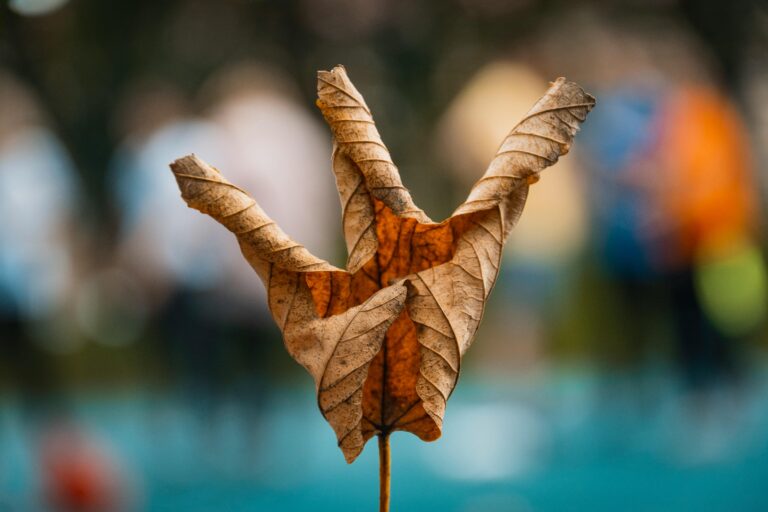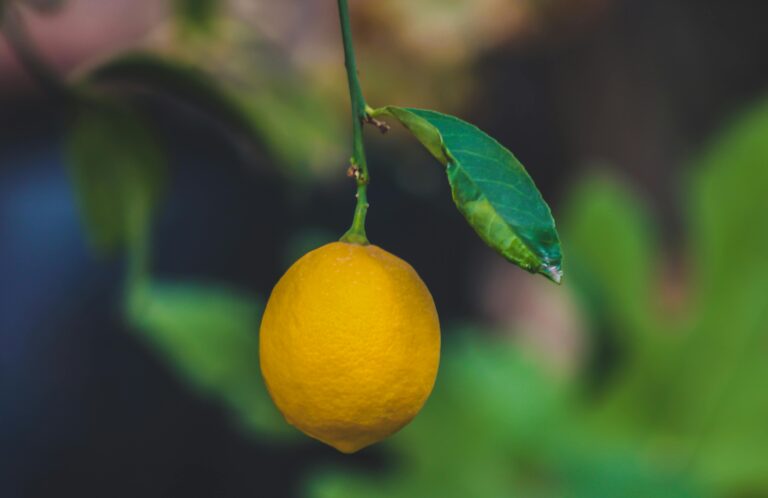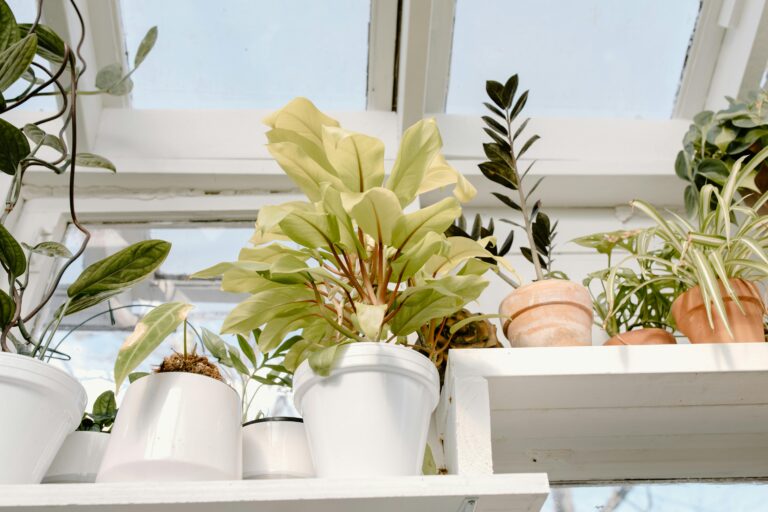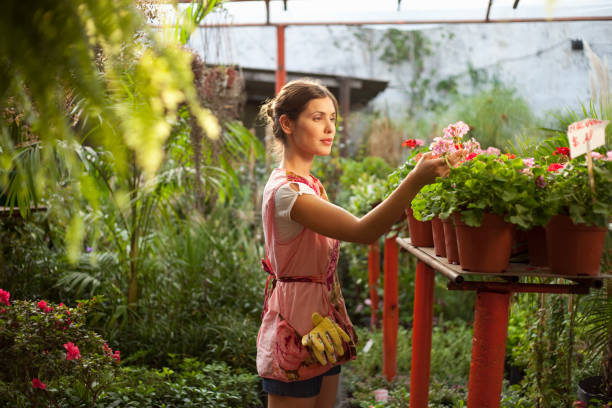“After 7 years of terrace gardening, I’ve learned that container gardening success isn’t about growing everything — it’s about knowing what not to grow in pots, and choosing plants wisely.”
I can divide my container gardening journey into different phases. Before 2018, I only had a few here-and-there potted plants — 99% of my garden lived happily in the ground beds. But when space became an issue, I turned to container gardening seriously in 2018. My initial motto was simple: grow some greenery to satisfy my inner gardener.
Those first years were filled with trial and error, plenty of frustration, and yes — more failed plants than I’d like to admit. By 2021, I had started record-keeping my plant growth to better understand what actually thrives in pots. That was also the year I crossed 70+ container plants on my terrace — while at the same time, I had a history of killing almost the same number.
The biggest shift happened then: I finally stabilized my mindset and realized that the real success in container gardening for beginners and home gardeners doesn’t come from fancy tricks, but from knowing which plants are worth growing — and equally, what not to grow in pots.
Life also threw its challenges. In 2023, a knee fracture left me immobile for months, and sadly, I lost nearly half of my plants. After recovery, I chose to reduce my plant count willingly, focusing only on those that truly thrive in containers with basic gardening care.
Through these seven years, one lesson stands out: The only way to succeed in terrace gardening and container gardening is not just to chase what grows well.
You also need to understand and accept what doesn’t belong in containers. With that mindset, you can keep your potted plants alive and healthy without expensive gadgets, without constant stress, and without chasing perfection.
Quick reassurance: You really can have a thriving container garden — if you choose your plants wisely.
Why Some Plants Just Don’t Work Well in Pots (No Matter What Pinterest Says)

Sometimes you wonder why — after investing in expensive potting mix, premium pots, and giving what you thought was high-end plant care — your potted plants are still dying. Yet, Pinterest boards and Instagram gardens look effortlessly cozy.
Here’s the truth: not everything you see on social media is realistic. And even when influencers say a plant is “easy to grow in pots,” what they mean is that they already follow the right care. It feels easy for them because they know exactly what to do.
If you want a thriving container garden (the realistic kind, not the picture-perfect kind), you need to understand what your plants actually need in container gardening. Notice I said container gardening, not just gardening — because the rules are very different from growing in ground beds.
Your prior experience in ground gardening won’t always help here. I’m a living example — in my early days, I ruined many potted plants by applying ground gardening hacks that simply don’t work in pots. The lesson I learned is simple: to make plants thrive in containers, you must understand the basics of container gardening and accept that some plants just don’t belong in pots.
Space and Root Depth Limitations in Container Gardening
Even if you keep upgrading pot sizes, some deep-rooted plants are not meant for pots. In my early container gardening journey, I grew roses in heavy concrete pots. They did well for a year — but then growth became stunted. When I shifted the same rose plants to the ground, the shrubs shot up from under 1 foot to over 5.5 feet tall within months.
The same applies to many fruit trees and edible tree saplings. You can trim them all you want, but that’s not their natural growth pattern. In pots, they may survive, but their yield and lifespan are usually compromised.
Instead of cramming tall and wide-rooted plants into small pots, choose compact plants suitable for containers. Annual flowers, foliage plants, and simple vegetables like chilli, tomatoes, herbs, leafy greens, and microgreens are far easier to grow and much more rewarding in pots.
Water and Nutrient Imbalance in Potted Plants
Watering is the trickiest part of container gardening for beginners. Underwatering leads to wilting, while overwatering invites fungal diseases.
The same goes for feeding. You can’t fertilize in the same way you would in a raised bed or ground garden. Over-fertilizing in containers burns roots and weakens plants, while nutrient deficiencies cause yellowing leaves and stunted growth.
A few tips that helped me:
- Do deep watering until you see water draining out from the bottom holes.
- Check the topsoil — water only when it feels dry.
- For small pots, bottom watering ensures plants take up only what they need.
- Stick to organic fertilizers — add compost to your potting mix, and top up once a month in small amounts.
- Liquid fertilizers are beginner-friendly, and plants absorb them quickly.
Getting watering and feeding right takes practice, but once you learn the rhythm, your plants will stay healthy without stress.
Overheating Issues in Pots During Tropical Summers
If you live in a hot climate like South India, overheating is a common issue. Non-porous pots such as plastic, metal, glass, fiber, or resin heat up quickly, cooking the soil and stressing roots. Metal and glass are the worst offenders.
To avoid this:
- Use porous containers like terracotta or fabric grow bags.
- Semi-porous materials like concrete and ceramic also perform well.
- If you must use non-porous pots, increase drainage holes, add a drainage layer, and place the pots where they get indirect light.
- Use shade nets to cut down harsh summer sun.
- Instead of overwatering, practice morning deep watering, light misting, and ensure good air circulation to reduce heat stress.
These small adjustments help your plants stay cooler and prevent stress-related wilting.
How Pot Material Affects Plant Stress and Growth
Pot material does more than hold soil — it directly affects plant health in container gardening. Porosity determines how much oxygen reaches the roots and how fast water evaporates.
- Terracotta pots dry out quickly, so they need more frequent watering.
- Plastic pots retain moisture longer — if you water before the soil dries, roots suffocate.
- On terraces and balconies, I prefer fabric grow bags or plastic pots with added drainage because they’re lightweight and don’t add pressure to the roof.
Pot material also impacts plant stress during transfers. Fragile pots (like thin ceramic) may crack, forcing you to repot too often. But frequent repotting stresses plants because they need weeks to settle into new soil. A stressed plant spends its energy recovering from shock instead of focusing on healthy growth.
Choosing the right pot material for your climate and space makes container gardening far less frustrating.
My ‘Tried-and-Failed’ List – What I Stopped Growing in Containers

I was so enthusiastic about growing in pots, especially in my early days. With little awareness of container gardening, I had the guts to try almost anything. My thought was simple: “If I want to grow it, I’ll grow it in pots.”
The mistake? I blindly applied my ground gardening techniques to containers and ended up planting and seeding varieties that were never meant for pots. The result? A collection of ten different plant problems.
Viola — that’s when I woke up from my dream garden and started reading, observing, and learning about the actual science of container gardening. Over the years of trying and failing, I began to understand plant growth patterns and figured out what really works in containers with the right kind of care.
Let’s decode that together.
Large Fruit Trees in Pots – Why They Struggle
In my early years, I grew lemon, guava, and gooseberry saplings in pots, upgrading the container size every few months. Still, they never performed like the same trees growing in my neighbor’s ground bed.
The reality is simple: tree-type plants do better in the ground. Even a 5-foot tree has massive spreading roots underground. Regular 12-inch or even 20-inch pots can’t support them. For proper growth, they’d need containers as large as a water-storage drum — and those are too heavy for most terraces or balconies.
If you only have concrete ground space, you could try them in very large, sturdy containers, but I wouldn’t recommend it for small spaces. Instead, go for dwarf fruit trees bred for pots. They’ll give you a better chance at success without back-breaking weight issues.
Deep-Rooted Vegetables in Containers – A Tough Challenge
Vegetables like potatoes, beets, carrots, radishes, and even okra are all deep-rooted crops. They need at least 2 feet of soil depth to spread their roots naturally. In regular pots, these veggies often end up stunted, with low yields and sometimes even a lack of flavor compared to their ground-grown counterparts.
You can experiment with deep-rooted vegetables in containers, but it requires customised deep pots or repurposed containers like buckets or barrels that can handle their growth. For most home gardeners, it’s easier to focus on shallow-rooted vegetables such as leafy greens, chillies, or tomatoes that thrive in limited space.
Plants Prone to Pest Explosion in Pots
Another lesson from my own garden: some plants are simply more vulnerable to pests and diseases in containers.
- Roses: Limited root space and watering stress make them highly prone to black spots, aphids, and fungal problems in pots.
- Citrus and fig plants: Even dwarf varieties are frequent targets of scale insects, leaf miners, and fungal diseases in containers.
- Gardenias: These beauties are fussy about consistent watering. Any imbalance causes root stress, making them more susceptible to pests.
- Hibiscus: They are heavy feeders. Without regular fertilizer, they weaken and quickly fall victim to pests like mealybugs (my hibiscus has been attacked more than once despite extra care!).
Yes, you can grow these in containers if you’re committed to regular feeding, pest management, and monitoring. But if you’re looking for low-maintenance plants, they can become frustrating.
Myth vs. Reality – Social Media Lies I Fell For

You might relate to this: when you’re full of enthusiasm about starting a container garden, social media floods your feed with “perfect garden” setups, fancy hacks, and picture-perfect pots without a single soil spill.
I can’t say everything is useless — some tips did help me solve real container gardening problems. But many of those videos sell unrealistic expectations: expensive materials, instant solutions, and spotless patios. Don’t fall for those lies. Here are three common myths I believed once but no longer buy into:
“Any plant can grow in a container”
→ Not true, especially in tropical climates.
Your local weather defines your plant’s microclimate. If your regional temperature doesn’t match the plant’s natural requirements, it will only struggle. Even if it survives, it won’t thrive unless you create the perfect microclimate — and honestly, that’s not realistic for every gardener.

“Smaller pots save space”
→ Roots need more room than you think.
The biggest potting myth I fell for was choosing pots based on plant height or foliage size. In reality, you should select a pot at least 2 inches wider than the root ball, and upgrade gradually as roots outgrow their container.
If you have limited space, it’s smarter to choose plants that naturally stay compact instead of cramming large growers into tiny pots. Healthy, thriving plants in the right-sized pots show you’re a skilled gardener — not the sheer number of weak plants squeezed into small containers.

“Self-watering pots mean no care”
→ Moisture control is still critical.
Self-watering pots, drip irrigation, and watering spikes are great for busy gardeners or frequent travelers. But they’re not a no-care solution. If you increase moisture levels too much or forget to adjust for humid weather, you’ll cause the same damage as overwatering.
The healthiest habit is still the simplest: water your pots when the topsoil feels dry to touch. Tools can help, but no device replaces consistent observation and hands-on care.

Budget-Friendly Alternatives That Actually Work

When it comes to container gardening, it’s often the most budget-friendly and affordable way to grow plants compared to ground gardening or even raised beds. And the best part? Some easy-to-care-for varieties can save you both money and time — thriving with just basic container gardening care.
Here’s my personal list of beginner-friendly plants for pots that are simple to grow and maintain.
Drought-Tolerant Herbs for Pots
Herbsare some of the easiest plants to grow in containers. They love sunlight, so place them in a bright spot with at least 4–6 hours of light. The key is watering: herbs prefer moist but well-draining soil — they hate sitting in soggy conditions but can tolerate slight underwatering.
Tips from my trial-and-error:
- Don’t overcrowd herbs in a single pot — overcrowding invites pests like aphids.
- In the peak of summer, move them to a less intense spot or use a shade net for container plants.
- Herbs are not heavy feeders. Monthly organic fertilizer is enough.
- Be consistent with pruning and harvesting — it encourages bushier growth and more leaves.
Leafy Greens That Regrow Quickly
Leafy greens are among the most rewarding crops in pots. They need less care and some varieties even tolerate poor soil. With the right potting mix, regular watering, sunlight, and mild monthly feeding, they’ll flourish.
“The beauty of growing greens in pots is the harvest cycle”, Harvest the entire plant with roots if you want a single yield. Or cut one-third of the plant, and it will regrow for 2–4 more harvests with proper care. With this method, you can plan and enjoy year-round leafy greens in containers — from spinach to amaranthus to lettuce.
Compact Edible Plants for Small Spaces
For your kitchen garden, compact edible plants are a lifesaver. Dwarf varieties of tomatoes (like cherry tomatoes), chillies, spring onions, chives, and other everyday edibles are perfect for containers.
These plants are easy to maintain, don’t need much space, and reward you with fresh homegrown vegetables from your pots. Choosing dwarf or bush varieties makes a huge difference — they stay compact and still give excellent yields.
Hardy Flowering Plants That Thrive in Pots
Hardy flowering plants bring instant cheer to any balcony or terrace garden. Varieties like vinca, marigold, and daylily are drought-tolerant, pest-resistant, and forgiving if you miss a watering or two. However, flowering plants are generally heavy feeders.
To keep flowers blooming:
Add organic compost to the soil mix.
Feed them once a month with organic fertilizer for potted flowering plants.
Deadhead (remove dried flowers) to encourage continuous blooms.
These plants thrive with very little fuss and brighten up your garden space all season.
Local & Seasonal Reality – What’s Worth Growing in Pots

I’m in the southern part of Tamil Nadu, where the climate is mostly hot and dry. Over the years, I’ve noticed that drought-tolerant plants thrive best on my terrace garden.
Whenever I experiment with other varieties for research or note-taking, I have to create an artificial microclimate — tweaking the potting mix, adjusting watering schedules, moving pots to shaded or sunnier spots, and using specific fertilizers just to keep them alive.
On the other hand, native and drought-tolerant plants do well with minimal care. They bounce back even if I miss watering, and they don’t demand constant attention.
That’s the real lesson: choosing plants that suit your local climate and weather saves you time, effort, and money. Instead of forcing every plant to survive, pick the ones that naturally fit your conditions — your garden will be healthier, and your gardening journey much more enjoyable.
Heat-Tolerant Plants for Summer 
Summer is the real test for container gardening, especially in tropical regions where pots heat up faster than garden beds. Still, some plants not only survive but love the heat when cared for right.
- Flowers: Vinca, Portulaca (Moss Rose), and Zinnia thrive in full sun and reward you with continuous blooms even in peak heat.
- Edibles: Cherry tomatoes, okra (ladies’ finger), and chillies do really well in hot weather, provided they get enough water and deep containers.
- Herbs: Basil, rosemary, and thyme are sun-lovers and can tolerate dry spells. Just avoid soggy soil, and they’ll stay happy.
- Foliage Plants: Snake plant (Sansevieria) and Aloe vera are excellent for hot, dry corners of your terrace where other plants might wilt.

Monsoon-Friendly Container Plants 
The rainy season feels like nature is watering for you — but too much waterlogging can harm pots. Choosing plants that tolerate high moisture makes gardening stress-free during monsoon.
- Flowers: Marigold, Hibiscus, and Barleria (Philippine violet) handle the rain beautifully and bounce back quickly after heavy showers.
- Edibles: Spinach, amaranthus, and cucumbers are perfect monsoon edibles. Just ensure good drainage to prevent root rot.
- Herbs: Mint and coriander actually love the cool, moist conditions of the rainy season — you’ll find them growing faster than in summer.
- Foliage Plants: Ferns and Caladiums enjoy the humidity, making your terrace or balcony lush and tropical-looking.

Plants That Thrive on Terraces with Partial Shade 
Not all terraces get full sun all day, and that’s okay. Many plants actually prefer a balance of light and shade, making them perfect for partially shaded corners.
- Flowers: Impatiens and Begonias bloom beautifully in partial shade, bringing color to spaces where sun-lovers may fail.
- Edibles: Leafy greens like lettuce, kale, and Malabar spinach are happy with 3–4 hours of sunlight and steady moisture.
- Herbs: Parsley and chives are great shade-tolerant herbs that keep producing with minimum fuss.
- Foliage Plants: Syngonium, Pothos, and Peace Lily thrive in filtered light, giving a lush green vibe without demanding full sun.

Problem-Solving: If You Still Want to Try These ‘Difficult’ Plants
Even after reading an entire blog about container gardening, your heart might still crave those bigger plants or the tricky-to-care-for ones. Honestly, I’ve been there too. If you’re dedicated and ready to spend extra time with your plants, you can make it work with a few smart hacks. But one thing to keep in mind — never overload your balcony or terrace without being completely sure about its construction strength and weight-holding capacity. Safety first, always.
Hacks to Grow Bigger or High-Maintenance Plants in Containers
1. Choosing Extra-Deep Containers
Deep-rooted plants like okra, carrots, or even dwarf fruit trees need more space to stretch out. Instead of standard pots, go for extra-deep containers or repurpose old drums, tubs, or barrels. The deeper the container, the better the root development and plant stability. This also helps reduce stress during the hot summer months.
2. Improved Potting Mix for Moisture Balance
Bigger plants consume more water, and container soil dries out faster. That’s why a well-balanced potting mix is key. Combine cocopeat for water retention, compost for nutrients, and perlite or sand for aeration. This way, the soil won’t get waterlogged but still holds enough moisture for steady growth. For heavy feeders like hibiscus or roses, you can mix in slow-release organic fertilizers to keep them nourished.
3. Shade Net or Microclimate Tricks
Bigger plants tend to stress easily under harsh sunlight or heavy monsoon rains. A simple shade net setup can cut down the intensity of direct sun and help control temperature fluctuations. You can also create a microclimate by grouping plants together — taller plants provide natural shade to smaller ones, reducing heat stress. Even placing water trays nearby can help in humidifying dry terrace conditions.
4. Pest Prevention Before Planting
High-maintenance plants like gardenias, roses, or fruit trees are more prone to pest attacks when stressed in pots. A smart hack is preventive care before planting. Sterilize the soil mix by sun-drying it, add neem cake powder, and check the sapling for early signs of pests. Once planted, regular pruning, neem oil sprays, and timely fertilization help reduce pest explosions before they turn into major issues.
🌿 Final Thoughts
“Focus on Joy, Not Perfection”
At the end of the day, container gardening isn’t about chasing a picture-perfect setup. Failures are just part of the learning curve — every plant that struggled in my pots taught me something valuable.
Choose plants that suit your local climate, budget, and available time. Don’t force yourself into high-maintenance plants if you’re already juggling a busy life. And remember — gardening should bring you joy, not stress.
Your balcony or terrace doesn’t need to look like Instagram to be successful. A few thriving, happy plants that grow with your care are worth far more than a hundred struggling ones.
✨ If you want to dig deeper into the basics that actually matter in container gardening, you can check out my guides on:
- 🪴 Potting Mix for Healthy Plants
- 💧 Liquid Fertilizer & Feeding Tips
- ☀️ Light, Space & Drainage Essentials
I’d also love to hear from you — share your container gardening stories, struggles, or little wins in the comments below. Let’s grow and learn together! 🌱


